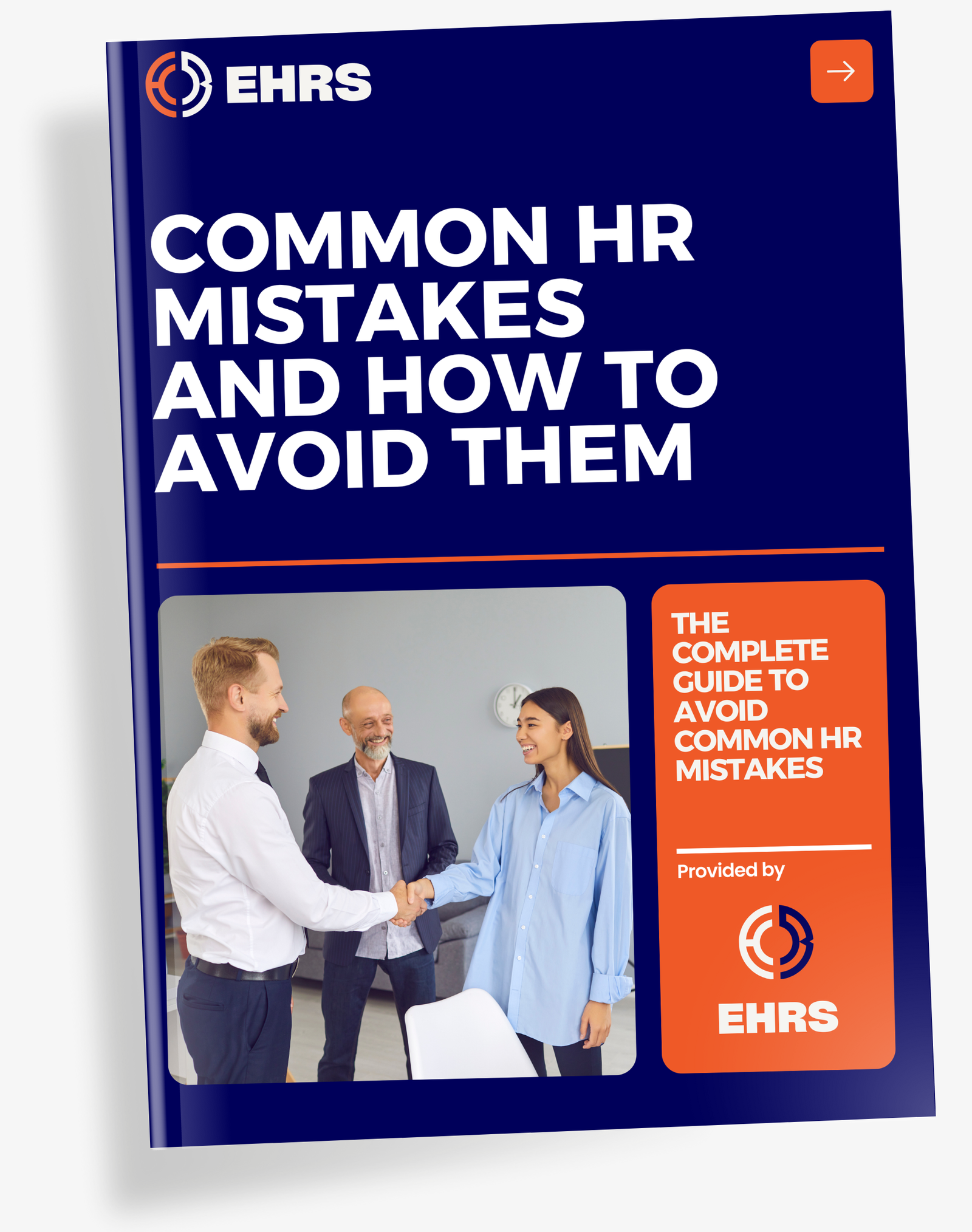Navigating payroll in Estonia can feel overwhelming for foreign businesses, with its unique tax structure and digital compliance requirements creating risks of costly errors.
This guide demystifies the process, explaining how Estonia’s advanced digital infrastructure and streamlined tax system—featuring a flat 20% income tax, fully employer-paid 33% social tax, and a minimum wage of 886 EUR/month—can simplify payroll while ensuring legal compliance.
Discover actionable insights into calculating net salaries, navigating mandatory contributions like unemployment insurance (0.8% employer/1.6% employee), and leveraging digital tools like e-MTA for seamless reporting by the 10th of each month.
Transform payroll from a complex obligation into a strategic advantage by mastering Estonia’s efficient, tech-driven framework.
A Guide to Understanding the Fundamentals of Payroll in Estonia
Estonia’s digital infrastructure and simplified tax system attract international businesses. Its flat corporate tax rate and streamlined compliance processes reduce administrative burdens. Understanding local payroll regulations ensures legal compliance. This guide explains Estonian payroll components, from tax obligations to employment rights.
Taxes and Social Security Contributions
Estonia’s payroll system places the social tax burden entirely on employers. This simplifies employee net income calculations while maintaining social security coverage through:
- Social tax at 33%
- Unemployment insurance: 0.8% (employer) and 1.6% (employee)
- 2% funded pension contributions for employees born after 1982
- 20% personal income tax applied after deductions
As detailed by tax experts, the 33% social tax funds healthcare and pensions, calculated on gross salary. Employers must observe the 2025 minimum base threshold of 820 EUR, ensuring social protection for lower-income workers. For salaries below this threshold, the tax still applies to the full 820 EUR base—this safeguards social benefits while creating unique cost considerations for entry-level positions.
Summary of Estonian Payroll Contributions (2025)
| Contribution | Employer Rate | Employee Rate | Notes |
| Social Tax | 33% | 0% | Calculated on gross salary, funds pension and health insurance |
| Unemployment Insurance | 0.8% | 1.6% | Applies to gross salary |
| Funded Pension (Pillar II) | 0% | 2% | Mandatory for employees born after 1982 |
| Personal Income Tax | N/A | 20% | Applied after deductions and tax-free allowance |
These interconnected contributions require precise tracking. A minimum wage worker earning 886 EUR gross generates 270.60 EUR in social tax. Personal income tax then applies to the remaining amount after employee contributions, creating a cascading effect. The 654 EUR monthly tax-free allowance further complicates calculations—this amount reduces proportionally for incomes exceeding 2,500 EUR, directly affecting net pay.
Key Employment Regulations and Entitlements
Employers must follow strict labor laws. According to Tranding Economics, Estonia’s 2025 minimum wage is 886 EUR/month. Three critical areas affect payroll:
- Working Hours: Standard 40-hour weeks with 1.5x overtime rates
- Leave Entitlements: 28 annual leave days plus sick leave provisions
- Special Circumstances: Parental leave rules and healthcare contributions
Employers cover days 4-8 of sickness, while the Estonian Health Insurance Fund (EHIF) assumes responsibility from day 9. Exceptional cases—like pregnancy-related sick leave—trigger EHIF payments starting day 2 at 70% of income. Parental leave provisions offer flexibility through 475 days of shared parental leave, though proper implementation requires understanding nuanced rules about income thresholds and benefit reductions.
Proper calculation prevents financial exposure—miscalculating overtime for a 45-hour workweek employee at minimum wage could result in underpayments exceeding 15% of total payroll. For a 886 EUR salary, this represents 132.90 EUR in unaccounted costs monthly—a significant risk for growing businesses. Automated payroll systems that update with regulatory changes help mitigate these risks while maintaining compliance.
Setting Up And Running Your Monthly Payroll In Estonia
The Digital-First Registration Process
Establishing payroll in Estonia starts with a fully digitized process. Companies must register with the Estonian Business Register (Äriregister) for legal recognition and the Estonian Tax and Customs Board (EMTA) to obtain a VAT number and employer status. Employees must be registered via the e-MTA portal before their first workday. Payroll payments can use SEPA-compliant European bank accounts, allowing flexibility for international businesses.
- Company Registration: Enroll in Äriregister for legal recognition and tax compliance.
- Tax Authority Registration: Register with EMTA to secure VAT and employer status.
- Employee Registration: Submit records via e-MTA before work begins to avoid penalties.
- Bank Account: Use any SEPA-compliant account for cross-border payroll disbursements.
The system’s digital-first approach minimizes delays. Äriregister processes registrations quickly, while EMTA’s e-MTA portal offers 24/7 access for real-time updates. This efficiency highlights Estonia’s digital governance strengths.
The Monthly Payroll Cycle And Reporting
Estonia requires monthly payroll processing. The TSD tax declaration must be submitted via e-MTA by the 10th day of the following month. Missing this deadline incurs penalties, emphasizing strict compliance. Payslips must detail gross pay, deductions (e.g., unemployment insurance, pension contributions), and net salary for transparency.
- Payroll Frequency: Monthly cycles align with labor standards for simplicity.
- Reporting Deadlines: Submit the TSD form and pay taxes by the 10th day post-month via EMTA to avoid fines.
- Payslips: Itemized breakdowns of salary components (base pay, allowances, taxes) are required.
As confirmed by tax compliance reports, the system balances rigor with efficiency. EMTA’s platform automates error checks, ensuring accuracy. Payslips must also show the tax-free allowance applied, clarifying how net salaries are calculated.
Payroll Calculation: From Gross To Net
Payroll calculations follow a fixed structure:
- Gross Salary: Base pay before deductions, including bonuses or allowances.
- Deductions: Subtract 1.6% (unemployment insurance) + 2% (pension) = 3.6% total.
- Taxable Base: Adjust for tax-free allowances (€654/month if income ≤ €1,200; decreases above €1,200).
- Income Tax: Apply 20% tax rate to the taxable amount after deductions.
- Net Salary: Final amount after taxes and deductions.
- Example: A €2,000 gross salary minus €72 (3.6%) = €1,928 taxable base. Subtract €654 allowance → €1,274 taxable income. 20% tax = €254.80. Net: €1,673.20.
Complexities like variable allowances or multiple income sources often push businesses to use payroll services. These platforms automate calculations, ensuring compliance with Estonia’s tax rules, such as age-related allowances. Outsourcing reduces administrative work, letting companies focus on operations while maintaining precision.
Navigating Advanced Payroll Topics and Compliance in Estonia
Termination of Employment: Notice Periods and Severance
Employers in Estonia must follow precise legal procedures when ending employment contracts. During the probationary period (up to 4 months), either party can terminate with 15 calendar days’ notice. Post-probation notice periods escalate with tenure:
- Less than 1 year: 30 calendar days.
- 1–5 years: 60 calendar days.
- 5–10 years: 90 calendar days.
- Over 10 years: 120 calendar days.
Employers may substitute notice with payment in lieu. For economic dismissals, severance pay is mandatory: 1 month’s average salary for under 5 years’ tenure, 2 months for 5–10 years, and 3 months for over a decade. The Unemployment Insurance Fund (Töötukassa) may cover 1–2 additional months’ pay if the employer cannot. Failure to comply risks legal disputes, fines, or reputational damage, underscoring the importance of robust payroll compliance frameworks.
Considerations for International Employees and Double Taxation
For international hires, Estonia’s tax residency rules hinge on permanent residence or 183+ days of annual presence. Residents pay a flat 20% income tax on global earnings, while non-residents are taxed only on Estonian-sourced income. EU citizens face no work permit requirements, but non-EU nationals must secure permits through Estonian embassies or the Police and Border Guard Board. Estonia’s network of 70+ double taxation agreements (DTAs) with countries like the U.S., UK, and Germany ensures income isn’t taxed twice. For example, a French resident working remotely for an Estonian firm would pay tax only in France, avoiding double liability. This framework simplifies cross-border payroll administration, reducing compliance burdens for multinational employers.
Beyond the Numbers: Cost of Living and a Good Salary in Estonia
Competitive salaries must align with Estonia’s cost of living. Tallinn, the most expensive city, has distinct spending patterns:
- Rent: 490–695€/month for a 1-bedroom apartment (420–830€ outside the city center).
- Utilities: ~289€/month for electricity, heating, and internet in an 85m² apartment.
- Groceries: 200–300€/month for a single person, covering basics like milk (1€/liter), bread (1.20€/500g), and chicken (7.10€/kg).
- Transport: Free with Ühiskaart (for residents); 30€/month for visitors using monthly passes.
Additional costs include childcare (45–600€/month for public/private daycare) and fitness memberships (53€/month). A net salary of 1,500–2,000€ typically supports a comfortable lifestyle for one person. Compared to Berlin (2,277€/month) or London (3,875€/month), Tallinn is 36.7% cheaper than New York (excluding rent). This affordability, paired with a 20% flat tax rate and no local taxes, makes Estonia attractive for global talent. Employers must balance statutory requirements with market realities to remain competitive while adhering to payroll regulations.
Partnering for success in your Estonian payroll
Estonia’s payroll system stands out for digital efficiency, with 98.7% of tax declarations processed through the e-Tax portal. Automated workflows for employee registration and digital payslips save €120 annually per employee. Yet compliance—like 33% employer social tax obligations and navigating income tax thresholds—requires expert handling.
Euro HR Solutions delivers tailored HR outsourcing to ensure seamless payroll execution. Their specialists manage Employment Register submissions, statutory benefits, and timely payments to meet monthly deadlines, eliminating risks of non-compliance penalties and optimizing tax-exempt allowances up to €7,848/year.
With 99% of public services digitized, partnering with experts streamlines operations. Secure e-Residency onboarding and automated systems reduce administrative burdens. Contact Euro HR Solutions to leverage Estonia’s digital infrastructure while ensuring compliance and operational efficiency.
Estonia’s payroll system merges digital efficiency with clear regulations, streamlining compensation. Yet, local tax rules and compliance demand expertise. Partnering with specialists like Euro HR Solutions ensures accuracy, letting businesses focus on growth. Optimize operations through tailored HR outsourcing today.
Frequently Asked Questions (FAQ)
How does the payment system work in Estonia?
Estonia operates a highly digitized payment system where electronic transactions dominate daily use. The euro (€) serves as the official currency, adopted since 2011. Common payment methods include bank transfers, debit/credit cards, and mobile payment platforms. Cash remains legal tender but accounts for less than 20% of transactions due to the country’s advanced digital infrastructure. Employers typically disburse salaries via bank transfers, aligning with Estonia’s e-Residency program and mandatory e-tax filing through the Estonian Tax and Customs Board (EMTA) portal.
Is €3,000 a good salary in Estonia?
A gross salary of €3,000 places an individual significantly above Estonia’s average net salary of €1,682. After accounting for the 20% income tax and 1.6% unemployment insurance, the net amount would comfortably support a single person in Tallinn, where average monthly living costs (excluding rent) are around €980. However, with rent for a one-bedroom apartment in city centers ranging from €698–€830, this salary would still provide a relatively comfortable standard of living. Families or those in higher-cost areas may find it more modest, but it remains well above the 2025 minimum wage of €886.
What is the hourly rate in Estonia?
The minimum hourly rate is calculated by dividing the monthly minimum wage (€886) by standard working hours (160 hours/month for a 40-hour workweek), resulting in approximately €5.35/hour before taxes. Actual hourly rates vary by industry, with tech and specialized sectors often exceeding this benchmark. Employers must also account for the 33% social tax applied to gross salaries, which funds healthcare and pensions.
What is the average salary in Estonia in USD?
Estonia’s average net salary of €1,682 translates to roughly $1,800 USD using a 1.07 exchange rate. This varies based on deductions, as gross salaries are reduced by 1.6% unemployment insurance, 2% funded pension contributions, and 20% income tax. High-earning sectors like IT or management often report gross salaries exceeding €3,000, but net figures depend on individual deductions and tax allowances.
How do you pay in Estonia?
Digital payments are the norm, with 98% of Estonian businesses using electronic tax filings and salary transfers. Employers pay wages via bank transfers, while employees receive payslips detailing gross-to-net calculations. For physical transactions, contactless cards (Visa, Mastercard) and mobile payment apps (like MobilePay) dominate. Cash remains legal tender but sees limited use outside rural areas or specific sectors like construction.
What tax system does Estonia use?
Estonia employs a flat tax system with no progressive income tax brackets. Key components include:
- 20% personal income tax on taxable income after deductions.
- 33% social tax (Sotsiaalmaks) paid entirely by employers, funding healthcare and pensions.
- 1.6% employee and 0.8% employer unemployment insurance contributions.
- 2% funded pension contributions (Kogumispension) for employees born after 1982.
The system prioritizes simplicity, with deductions like the €654 monthly tax-free allowance reducing taxable income for lower earners.
What is a livable wage in Estonia?
A livable wage in Tallinn typically ranges from €1,500–€2,000 net monthly for a single person. This covers rent (€698+ for one-bedroom apartments), utilities (€282/month for an 85m² apartment), groceries (€253/month for essentials), and discretionary spending. Rural areas reduce costs by 20-30%. Employers should consider these benchmarks when structuring competitive salaries to attract talent.
What job pays the most in Estonia?
High-paying roles cluster in IT, management, and specialized technical fields. Software architects, data scientists, and C-level executives often report gross salaries exceeding €4,000. The IT sector alone accounts for 15% of Estonia’s GDP, driving demand for skilled professionals. Doctors, lawyers, and engineers also feature prominently in top-earning brackets, though salaries vary by experience and location.
How much is rent in Estonia?
In Tallinn, average rent for a one-bedroom apartment reaches €698/month in city centers and €508 in outskirts. A three-bedroom city-center apartment averages €1,271. Rent constitutes the largest expense for residents, influencing the country’s overall cost of living. Smaller cities like Tartu or Pärnu offer 20–30% lower rates, making location a critical factor for employers structuring relocation packages.





